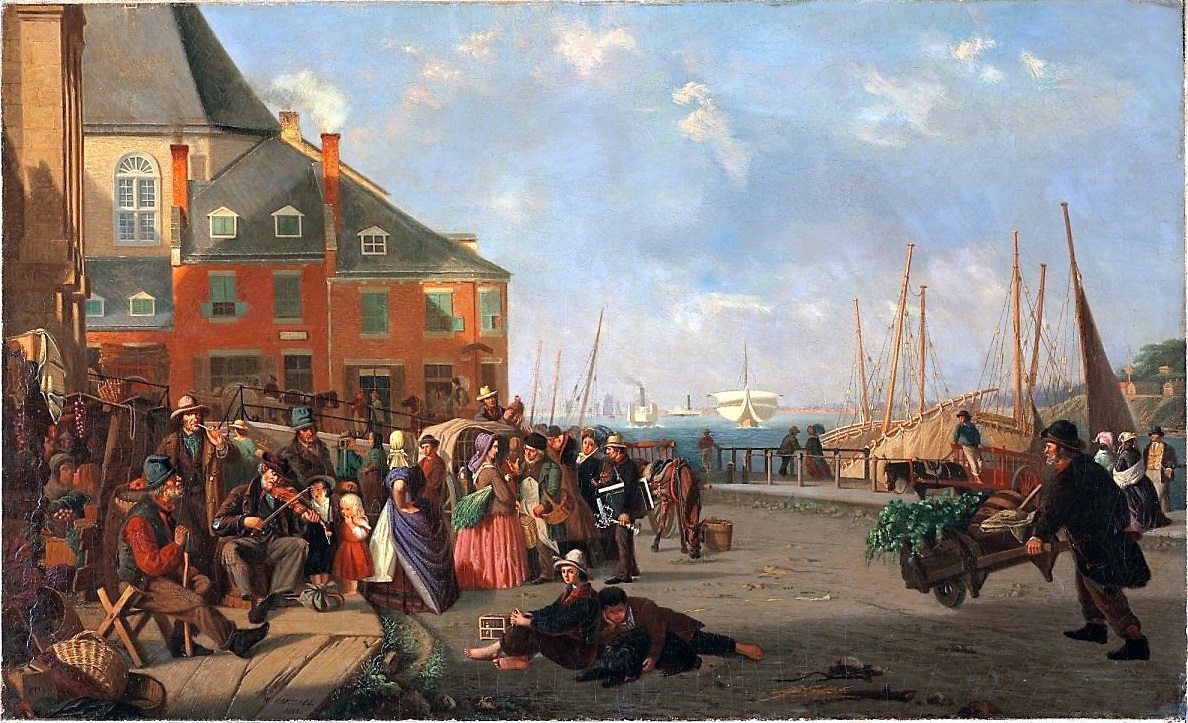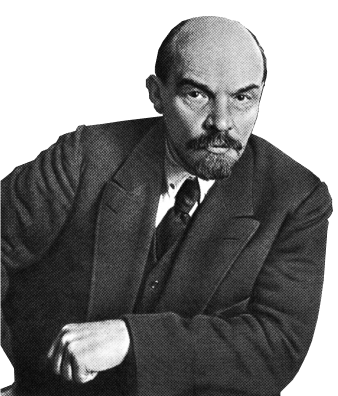
This articles was first publishe on Jan. 22, 2024.
Are high levels of immigration making Canada poorer?
In a recent report, economists at National Bank raise the idea that Canada is caught in a “population trap.” A “population trap,” as described by the report, is “a situation where no increase in living standards is possible because the population is growing so fast that all available savings are needed to maintain the existing capital-labour ratio.”
In other words, Canada’s population is growing faster than the economy (and the housing market in particular) can sustain, leading to a deterioration of living standards over time—or so the authors maintain. In recent years, immigration has made up almost the entirety of the increase in Canada’s population as birth rates decline. The conclusion: the more immigrants we let in, the poorer we all become.
In recent months, talk of Canada’s “population trap” has intensified. In a recent article for the The Globe and Mail, columnist Konrad Yakabuski writes that “Ottawa’s ‘population trap’ is making us poorer.” His solution? “Cutting immigration is no longer an option that [Immigration Minister Marc Miller] can just ‘consider.’ It must be his top priority.” For his part, Minister Marc Miller has described his own government’s immigration policy as a “system that has gotten out of control.” On Monday, he announced a first measure in response: a two-year cap on permits for international students.
The proposal to reduce immigration in response to Canada’s “population trap” has suddenly become fashionable even among Canada’s most “enlightened” business and political elite—a suggestion which these same individuals would have branded as “Trumpian” not too long ago.
But why are such proposals being raised now? And more importantly, is immigration actually to blame for Canada’s economic woes?
Surge in immigration
Canada has indeed witnessed a surge in immigration in recent years. In 2023, Canada’s population increased by a record 1.2 million people, most of which was made up of immigration. In the third quarter of 2023 alone, the population grew by 430,000 people—the largest such increase since 1957. Of these, 313,000 were non-permanent residents. It should be noted that these numbers, while a substantial increase by modern standards, are still not the highest immigration rates in Canada’s history. Canada experienced still greater immigration growth at the start of the 20th century, and again in the aftermath of the Second World War.
Total population numbers only tell part of the story. In 2023, Canada admitted a record 800,000 temporary workers and international students—an increase of 50 per cent from the previous year alone. In recent years, non-permanent residents have eclipsed the number of permanent residents admitted to Canada, which now make up the majority of immigration flows to Canada. Refugees make up only a small portion of non-permanent residents entering the country, despite the hysteria of right-wing pundits. In 2023, it is estimated that there were 2.5 million non-permanent residents living in Canada, only 289,000 of whom were asylum claimants. The rest, or roughly 2.2 million, were either holders of work or study permits, or both.
Reasons for immigration
That immigration levels have shot up in recent years is not in question. However, the question often ignored by proponents of “population trap” thinking is, why have immigration levels increased?
Unlike with permanent residents, the admission of temporary workers and international students is not limited by government caps. Instead, their admission is dictated almost entirely by the needs of individual employers and post-secondary institutions.
The “Great Resignation” of workers that accompanied the COVID-19 pandemic placed those who remained on the job in a more favourable bargaining position against their employers. Rather than give in to worker demands of increased wages and benefits, many businesses opted to tap into Canada’s temporary foreign worker program as a solution. The combination of lower wages in these workers’ home countries, plus their less than secure status in Canada, made them an ideal pool of cheap labour for businesses looking to slash costs. For the same reason, employers also tapped into Canada’s international student population in search of low-cost labour, made possible after restrictions on their ability to work were recently lifted.
In post-secondary institutions, international students have become a critical source of funding, without which universities and colleges would be hard pressed to fund their operations. In Ontario, post-secondary institutions now earn more revenue from international students from India than they do from the provincial government. This is the result of decades of underfunding by various levels of government for higher education, as well as these institutions’ ability to charge international students multiple times what citizens pay in tuition. Moreover, a whole industry of “diploma mills” have cropped up in recent years—post-secondary institutions which offer a dubious education but provide a possible pathway to citizenship.
Increased levels of immigration thus have little to do with “liberal ideology” that embraces immigration for moral reasons, as right-wing pundits are wont to argue. Those who remain doubtful need only consider the Trudeau government’s miserly attitude towards admitting Palestinian refugees to Canada. In truth, Canada’s high levels of immigration are driven almost wholly by the economic demands of business and post-secondary institutions, the latter of which only exists due to government neglect of higher education. The advocates of “population trap” thinking in business and politics are bemoaning a situation which they themselves engineered.
‘Population trap’: a Malthusian idea
This brings us to the main question. However you explain the reason for the explosion in immigration levels, is it to blame for declining living standards?
The “population trap” theory doesn’t lay its blame on population growth as such, but population growth that exceeds the “existing capital-labour ratio.” In plain English, this means a situation where the population grows faster than the plants, machinery, and technology that sustain that population. In other words, the problem is not the rapid growth of population, but that the underlying means of production don’t grow as rapidly. The problem identified by proponents of this theory is that too many forks are eating from the same pie. However, what they fail to consider is the size of the pie itself.
In the wake of the Second World War, Canada actually experienced higher rates of immigration as a percentage of the population than today. However, no one then seriously spoke of a “population trap” that would result in lower living standards. On the contrary, most Canadians experienced possibly the highest boost to living standards in the country’s history. How did this happen? Because although Canada’s population grew, the rate of economic growth grew as fast or faster. To this should also be added the massive expansion in housing during this period, in which the state played no small role in building units to make up for private developers—a role most levels of governments have ceased to play in recent decades.
The central mistake of “population trap” theory is that it considers the underlying wealth of society to be more or less fixed. It is not.
There is a long history of reactionaries and bourgeois economists trying to blame the “population trap” for poverty, unemployment, crime, and all manner of social ills. In the18th century, economist Thomas Malthus argued that the earth’s resources could only sustain a fixed number of people. From there, Malthus claimed that unemployment and poverty were the inevitable result of workers reproducing in excess of the demand for labour and the wealth available to feed, house, and otherwise sustain them. Karl Marx and Friedrich Engels provided a masterful takedown of Malthus’s theories. First, they explained how, by constantly applying new methods of production and technique, the planet could not only sustain a far greater population, but massively improve the overall standard of living. Second, Marx noted with curiosity that the same right-wingers who claim that there are too many people to employ during slumps, somehow find that there are labour shortages during recoveries.
The whole of history since that period provides an overwhelming confirmation of Marx’s case. Today’s proponents of “population trap” thinking are merely repackaging Malthus’s discredited ideas in order to obscure the real problem—the slowing growth of production. There is more than enough wealth available to feed, house and cloth everyone. And there is plenty of work that needs doing. The problem has nothing to do with population figures. The problem is that the capitalist system is incapable of utilizing this wealth to meet the needs of ordinary people.
Capital lags behind
The problem is not the growth of immigration, but the slowing of investment into production. The culprits are therefore not immigrants, but the source of those investments—the capitalists.
From 2011 to 2015, Canada’s level of investment into fixed capital formations (i.e. investment into things like plants and machinery) ranked 37th out of 47 mainly advanced countries, according to the OECD. From 2015 to 2023, its position declined to 44th, ahead of only South Africa, Mexico, and Japan. Until the 2010s, investment per worker in Canada rose relative to the U.S. and other advanced countries. By the early 2010s, Canadian business was investing 75 cents per worker for every dollar invested in the U.S. In 2023, that figure collapsed to 57 cents. In manufacturing the situation is even worse—in 2022 U.S. capitalists invested more than three times per worker than their Canadian counterparts. In turn, since the beginning of the 1990’s, productivity growth has consistently fallen across the Canadian economy.
These figures reveal that investment by Canadian business in real production was low long before the recent uptick in immigration, which only gathered steam after the pandemic. The same can be said of housing. One only needs to ask anyone living in Toronto or Vancouver how affordable their home was prior to 2020.
However, cause becomes effect. Canadian industry soon becomes unable to compete with its competitors due to its neglect of investment in production and declining productivity. In recent years, Canada has actually registered negative productivity growth, meaning its economy is producing less with each additional worker. This fuels a drive for ever cheaper pools of labour, to help offset the decline in profits. This easier access to cheap labour in turn further disincentivizes investment in real production, creating a vicious cycle. However, the ultimate cause remains the same—the puniness and parasitism of the Canadian capitalists as compared to their peers.
The communist solution
The blame for Canada’s falling living standards stands squarely on the shoulders of Canadian capital—not immigrants. However, in the face of rising public anger, the capitalists and their mouthpieces have attempted to scapegoat immigrants for their own failings. The theory of a “population trap,” or any of its other iterations, is merely the academic justification for this cynical blame game. Marx once described Malthus, and those like him, as “vulgar economists.” This was because they sought not to understand the workings of the economy, but to provide a vulgar defense of capitalist misery. Today’s “theorists” reprise Malthus’s reactionary role, albeit with less ability and more cynicism.
Communists reject the idea of immigration controls and defend the free movement of labour. A worker is a worker whether they were born in Toronto or Timbuktu. The way to defend high wages and a decent standard of living is not to keep foreign workers out, but to insist that their wages and living conditions be raised to the level of Canadian citizens. Furthermore, temporary foreign workers should be admitted into the ranks of Canada’s trade unions to help solidify the labour movement and prevent their use as strikebreakers. The idea of “an injury to one is an injury to all” doesn’t stop at holding a passport or permanent resident card.
Communists also reject the false idea that immigrants are to blame for Canada’s economic woes. We accuse capitalism. The largest enterprises should be taken into public ownership and their resources deployed for productive use under a central economic plan. This plan would be guided by the needs of the many, not of the powerful few.
The private market has failed to solve the housing crisis. The shortage of quality homes should be addressed by an unprecedented program to build high-quality public housing. Idle or underutilized land should be immediately confiscated from large investors in the interest of building homes at the lowest possible cost to the public. All this should be done under democratic workers’ control.
These measures would help pave the way for a massive increase in the standard of living for all people living in Canada. The capitalists and their hangers-on will no doubt offer up a stiff resistance to these changes. This can only be overcome by a revolutionary struggle of class against class that ends with the workers taking state power. No longer hampered by capital’s laws and bureaucracy, the workers’ state can then rapidly get to work on carrying out these measures.
Communists make no distinction by nationality when it comes to fighting for civil rights and a decent quality of life. We recognize only one race—the human race; and it is only under socialism that humanity can leave poverty behind and achieve its full potential.

